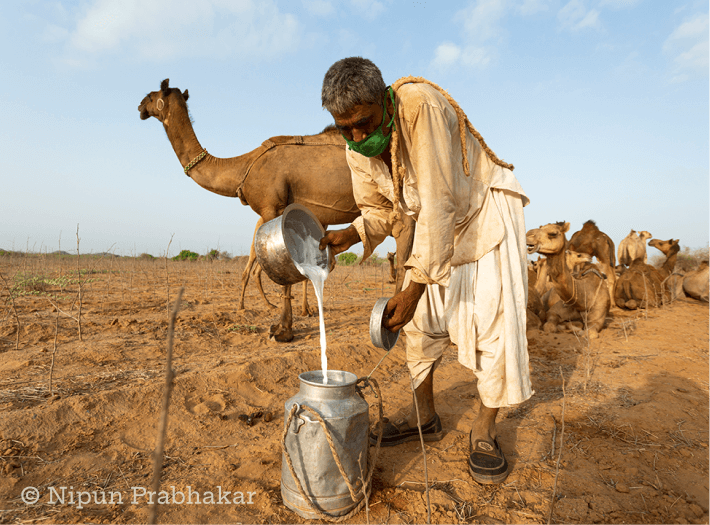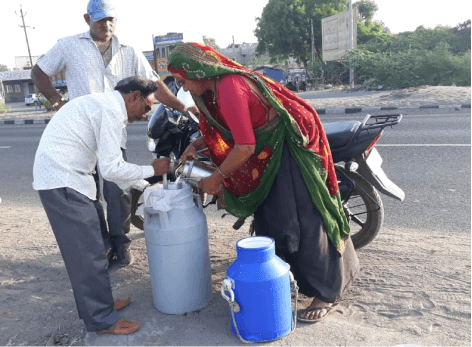
Cow and Buffalo Milk
Via collaborations with the government, private entities and dairies, the Banni is now one of the major milk-producing regions of the country, yielding a staggering 1,00,000 litres of mostly free-range and organic cow and buffalo milk per day. This milk is valued at more than 4 million rupees per day and close to 1.5 billion rupees annually.




